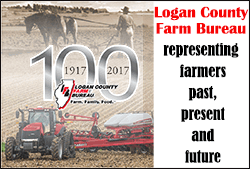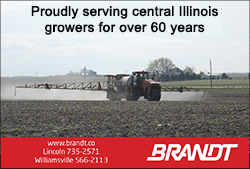|
 The running joke for a while was the best spring
month was February. We saw very warm temperatures in February, with
cooler than normal temperatures in the month of April. Then ups and
downs occurred during the rest of the growing season. The running joke for a while was the best spring
month was February. We saw very warm temperatures in February, with
cooler than normal temperatures in the month of April. Then ups and
downs occurred during the rest of the growing season.
My rain gauge had 16 days of some reportable rain in April, another
13 days in May, followed by only seven in June. Of course many of
these readings were not large, but served to cause some delays in
planting during the prime planting dates. My rainfall accumulations
were 4.79 inches in April, 3.47 in May, and only 1.31 inches in
June. This dry period lasted through the summer months into October.
Then rains began again as harvest was in mid-swing.

With extremely dry, to drought conditions, registered for our area
from June through September, we are being blessed with harvesting
some very good crops. The combination of “spoon feeding” moisture at
the right time, and the moderate temperatures during the driest
periods, have resulted in reaping a harvest better than many
anticipated. Many doubted the USDA numbers until combines started
rolling in the fields. The production being achieved is a testament
to producer capacity to plant in a short time frame, the support
system for inputs, and the continued improvement in genetics
available for planting.
Good yields aren’t only occurring in our area. The world grain
supplies are being added to each year. The economic principle of
supply and demand is definitely in effect. If there are larger
quantities of commodities, such as corn or soybeans, there must be
increased demand – or the price goes down. We are seeing that in
local crop prices, but particularly in the corn market. Futures
prices for corn show over a 15% decrease from the July highs to
early October. The soybean market has also seen a decrease of about
seven percent from the July high. In order to keep income up for
producers, they have to produce more bushels to sell at the lower
price in order to stabilize income.
Looking at 2018 projected crop budgets produced by Gary Schnitkey,
University of Illinois Ag Economist, corn after soybeans in our area
produces an income of $775 per acre. This uses a $3.80 price for 204
bushels per acre of yield. The direct production costs are listed at
$533 per acre, leaving $242 per acre to pay for land costs and
provide a return to the operator. Corn after corn is worse, with
some decreased yields, resulting in $189 to pay for land costs and
provide a return.
Soybeans are anticipated to be somewhat better for next year with
$601 gross income and $335 direct production costs, leaving $266 per
acre for land and return. These were based on expected yields of 62
bushel soybeans and a price of $9.70. In
operations with a large percentage of rented land, the land cost is
what is presenting a squeeze. It has been widely reported Logan
County had the highest cash rent in the state for the 2017 year,
according to the Ag Statistics Service Survey. Logan County rent was
$289 per acre according to the survey. The state average for
excellent ground (producing at least 190 bushels per acre) was $264
per acre. The professionally managed ground rented higher at $305
per acre for excellent ground, as the farm manager gets paid to
manage the ground. Simple math shows there is not enough income to
pay the average rent figures in Logan County. Reducing costs,
increasing yields, owning a percentage of the ground you farm,
paying less than the average rent, or marketing to produce higher
per bushel prices are all ways to try and make things work on grain
farms.
[to top of second column] |

Livestock enterprises are experiencing many of the same elements as
crop enterprises. Cattle prices remain strong, but have come off the
higher levels seen in recent years. Returns remain higher on
cow-calf production than finished cattle. Pork prices have been
relatively stable, but flirt with the costs of production equal to
or exceeding the income. Lower crop prices provide a lone decrease
in cost of production, since feed makes up a large portion of the
costs.
Specialty enterprises continue to increase in numbers. These
enterprises may be as traditional as selling freezer meat, or as
different as selling organic herbs at the farmers market. A trip
through a farmers market shows the vast array of products being
produced locally, and that is the real center of the specialty
enterprises. Locally grown and direct marketed are buzz words in the
industry, and have often times replaced organic as major criteria in
purchases made by consumers. The main points are knowing who is
producing your food, and being able to talk to them about how they
produce items.
The outlook for 2018 is probably best described as cautiously
optimistic, and is definitely better than one would have thought
earlier this summer. Bountiful yields have put a “spring in the
step” of local producers, as well as many though the Midwest. The
increase in production has translated into higher income, but will
also weigh on future markets. In this global market, there are many
production regions to contribute to the supply. Large harvests in
all regions do put a damper on higher prices. We also have to
remember farming is one of the few enterprises where someone else
sets the prices received for what the farmers produce. Increased
utilization of the crops then becomes the name of the game. Whether
those uses are ethanol, bio diesel, increased livestock feed use, or
other commercial and food uses, also depend on market factors.

Farmers will once again work on maximizing income through the many
options available to them, and the ingenuity of the producers will
go a long way to ensuring a favorable outcome once again.
|